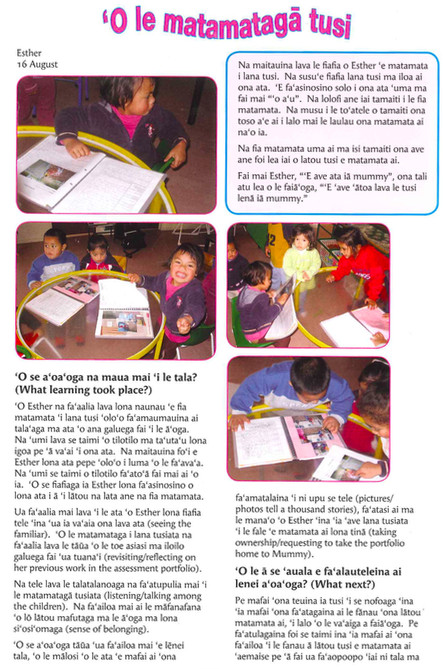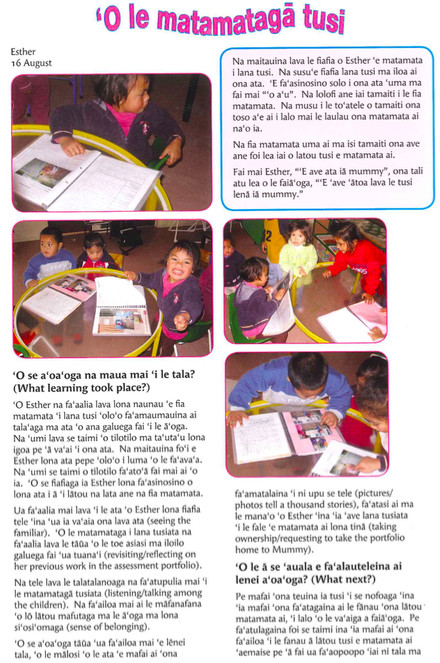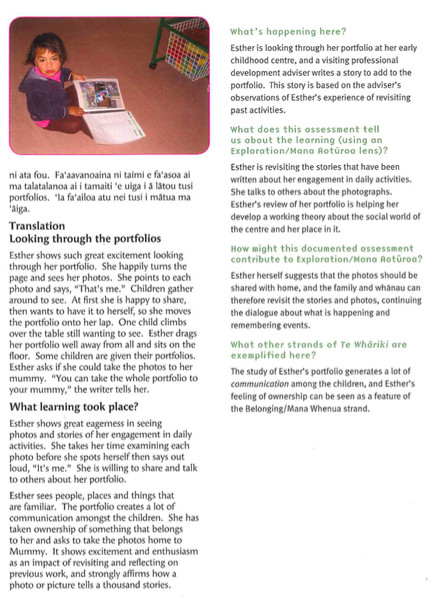Kei Tua o te Pae
Kei Tua o te Pae/Assessment for Learning: Early Childhood Exemplars is a best-practice guide that will help teachers continue to improve the quality of their teaching.
The exemplars are a series of books that will help teachers to understand and strengthen children's learning. It also shows how children, parents and whānau can contribute to this assessment and ongoing learning.
We are making improvements to our download-to-print functionality. So if you want a printed copy there are PDF versions available at the bottom of the main cover page.
Working theories for making sense of the natural, social, physical, and material worlds
-
So, what is camping?
A Group Learning Story
Date: 1 February
Teachers: Marilyn & Ruth
Noticing
When the children returned from their holidays, we noticed that there was a lot of talk about various holiday topics within the centre. However, it seemed that camping was a topic that was most often discussed among various children. So, we called a meeting to investigate this further. The children took turns sharing their holiday experience, and this is our first kōrero!!!
Holiday news
Jimmy: Mum and Dad built a big tent with a bedroom and a lounge. At night time I slept in the tent. At the daytime I got dressed and played. We needed to put them on in the daytime cos we needed to have clothes. I jumped in the river. (Jimmy demonstrated this with great enthusiasm.) Some snow came off the mountains and it went down into the river and melted cos the sun was out. I walked into the water holding my dad’s hands. I made some friends and one was a boy. If he went that way we would run that way.
Ruth: Did you chase the boy?
Jimmy: No, he chased us.
Ruth: So, you made some new friends.
Kim: Did the boy run really fast?
Kelly: How fast did you go?
Jimmy: Sometimes I run so fast!
Kim, Kelly, Jamie: Was there stones?
Jimmy: Yes, but not on the grass, just in the river.
Ruth: How did you cook your food?
Jimmy: On a fire.
Ruth: Did you take your toilet with you?
Jimmy: NO! We went to the toilet place.
Jade: I went camping and you had to do wees in the bushes.
Kim: I stayed home and sleeped. I dressed up and put my own clothes on.
Taylor: I went rock climbing and we went swimming.
Ruth: You went rock climbing. Can you tell us more about rock climbing? Did you get up to the top? Taylor: No, I was too scared.
Ruth: Did you have any special equipment?
Taylor: Someone was down there, and they made sure you didn’t fall down.
Sam: I went on an aeroplane to Auckland. Mum sat beside me. I got some lollies.
Ruth: What are the special names for the people who work on the planes?
Kelly: Pilot, Lolly people.
Jimmy: Drink people.
Ruth: Who lives in Auckland?
Sam: I goed with my mum and dad and my brother. I went to a motel.
Luka: I stayed home and went snowboarding in my room.
Ginny: I went to camping. We went to Pioneer. I went under with my swimming togs and my goggles. I did that (shaking her head from side to side) under the water.
At this point Ruth took up a pen and told the children that as a number of them had talked about camping, we would use the whiteboard to note some ideas and knowledge that we had about camping.
Camping
Ruth offered Ginny the pen to scribe her ideas on the board about camping. Ginny took the pen and very carefully drew a tent. (The graphic was half round with the open door carefully placed in the middle.)
Ginny: We’ve got a door on Nana’s tent. When you go camping you need a tent!
Ruth: So, what is camping?
Jimmy: Sleeping somewhere else!
Kelly: You take sleeping bags.
Kim: When I go camping, I take blankets. My grandma takes a camper van.
Jamie: We have blankets in our camper van.
Ruth: What else do you need?
Jade: Food.
Jamie: There might be an oven in the camping tent?
Jade: You need boats when you want to go camping at a river.
Kerry: You bring plates for food, a spoon for breakfast, and cups.
Jamie: You need water.
Marilyn: What if you are near the river and you catch a fish? How would you cook it?
Jade: You make a fire.
Children's representation
Following this discussion, the children were given paper and pens in order to draw their representational ideas about camping.
Recognising
While I value small groups, the value of large- group discussions and the sharing of ideas, as demonstrated here, can be a valuable process. The children were able to draw on and weave prior knowledge into this discussion (as evidenced by Jimmy’s expression of ideas about the mountains and the snow melting). This is a topic we had covered in a previous experience where the children drew the melting of snow and the development of rivers. This topic was also discussed in our snow project. (I wonder if this prior knowledge is a reflection of these experiences?)
The children display knowledge of the format of meetings. They are competent and confident sharers of information.
Ginny has become more competent and confident in a group. This is the first time I have witnessed her take up a pen and draw her ideas on a whiteboard to share with the group.
I have also noticed that the adult scaffolding of the discussion in these group projects is becoming less significant as the children take more responsibility for driving the discussion.
It became evident as our discussion developed that Kim and Jamie understand camping as involving camper vans rather than tents.
Responding
It would be interesting to ask the children more about the equipment required for camping and perhaps explore this avenue further. It would be interesting to take up Kim and Jamie’s idea and look at caravans and campervans. I wonder how the graphics will develop and what the before and after representations might look like?
It would be great to take this project out into the community and beyond the centre fence.
A parent’s voice
Just about every day for at least 3 weeks before the camping trip we heard about it from a very excited Isaac. Camping is nothing new to Isaac but having all his “big” and “little” friends there was something to look forward to.
He had never been to Spencer Park, but he heard all about it from pre-school. He had a picture in his mind about swimming, roasting marshmallows on an open fire, and the sea. I think the thought of going on a trip with his pre-school and with his family, Mum, Dad and 2 older sisters, was also important to him.
On arrival, Isaac could see all his friends, but being in a totally different place, went a little bit shy. This was quickly overcome, and he had a great time over the whole weekend playing with his friends. Big sisters, Arnia and Elysia, also played a useful role, playing with the pre- schoolers, and especially taking them to the play park where the flying-fox was.
For me the highlight of the weekend was the walk to the beach with our fellow campers. It was almost dark on arriving at the beach. It was lovely listening to all the comments and chat from all the pre-schoolers on that walk. A couple of the children were saying to each other how special it felt to them.
The whole event was so successful in a number of ways: helping families get to know each other; seeing the staff relate so well with the children, each other and all family members, in such a relaxed way; seeing the children playing and sharing together; the knowledge that this camping event was the culmination of the children’s camping project due to the staff’s excellent approach of listening and pursuing the individual child’s interest. Thank you, teachers. Isaac is looking forward to the next trip and having that open fire to toast marshmallows!
Debbie
Apart from Jimmy, the children’s names used in this exemplar are not their real names.
-
Te haeata – Dawn
Child’s name: Tia
Date: 16 August
Teacher: kuia (grandmother)
A learning story
Belonging
Mana whenuaTaking an Interest Tia woke at 6.30 a.m. I met her in the hallway and asked her if she wanted to come into my bed upstairs. She said yes. I told her there was a surprise up there for her and she was to leave the light off. We climbed into bed and I asked her to look out the window. The surprise was the Southern Cross pointers, which were still bright in the sky. I told her the traditional names of the stars and she repeated them. She was in awe of what she could see, I believe. I have introduced her to the evening star on many occasions and this was the first opportunity for me to show her the morning stars. As dawn broke the stars became more faint until they disappeared. I told her the stars were going to sleep because the sun was rising. We watched the sun rise and I sang the karakia to welcome the sun. She has a special relationship to the stars and the moon and often points out the moon during the day.
As the dawn was breaking the morning chorus began. Tia was asking, “What’s that?” I told her it was the birds singing to the dawn, welcoming the sun.
In her bedroom is a large painting that features a bird from the ancient cave drawings. I explained what it was. She repeated the names after me.
Well-being
Mana atuaBeing Involved Exploration
Mana aotūroaPersisting with Difficulty Communication
Mana reoExpressing an Idea or a Feeling Contribution
Mana tangataTaking Responsibility
-
Fire at the marae
-
8 November
It is so hard to believe for all of us that our beloved marae has been burnt down. The children are constantly talking about it. Many drive past it each day to come to kindergarten. The teaching team has engaged in much dialogue with the children and together they have come up with a plan. Not just some ordinary plan, a marvellous plan indeed.
This is what has been decided at our morning meetings with children. Whaea Taini has lost so many precious things and so why not make her something precious from the B.B.K. children. “Yes, a good idea,” thought Daniel P. and Oliver. Daniel suggested a taniwha like the one we had in our garden. It was put to the rest of the group and the decision – unanimous. We would ask Steve if that could be the focus for this Friday. Steve is always extremely agreeable and suggested we must get to work with our plans immediately.
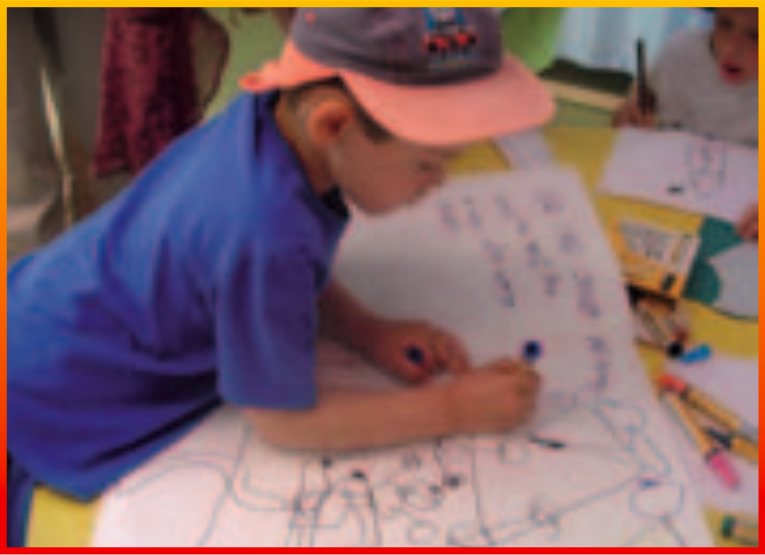
Children hurried to the table to sketch out their plans, chatting about the burning down of the marae, and some thought that the taniwha would be able to catch the bad guy and kill him!! Others drew much gentler taniwha surrounded by flowers. The drawings are stunning, and Steve visited later in the day to view them. He is feeling very positive about this taniwha and suggests that we make it on a smaller scale in case Whaea Taini doesn’t have much space in her office at the moment.
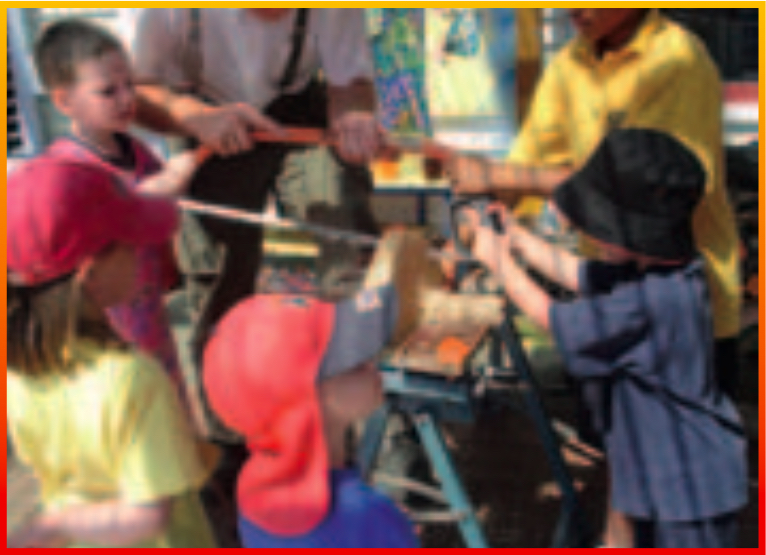
With the koha collected, the card nearly finished and the taniwha about to begin there is a feeling amongst us all that this will bring our community even closer.
Since our earlier trip to the marae, children and families have embraced the bicultural weave that has emerged through our curriculum. I guess we all felt part of us was affected when we heard the news of the arson.
Some children were bewildered and needed to go and visit, whilst others collected news cuttings and shared their feelings at mat time and through their drawings. On Monday next week we shall count the money together on the mat, wrap up the taniwha, and make a special delivery with aroha to Whaea Taini. I hope now some of our anger will disappear!!!!!
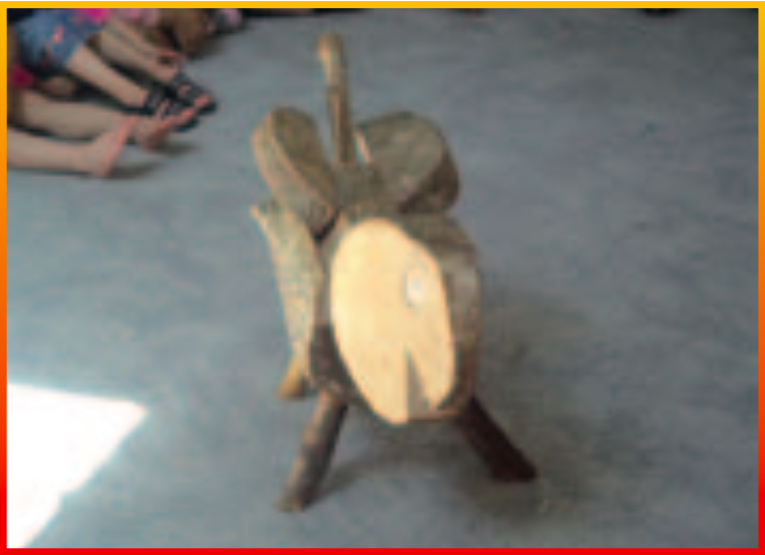
Parent's voice
29 October
Child: Daniel
Marae fire
Daniel was very taken with the tragedy of the marae fire. On the way home from kindy he spoke about what had happened very seriously and was angry with the “baddies” who did the terrible deed. He said it was very sad! He had enjoyed the visit to the marae earlier in the year. He asked if we could go and see what had happened. We did so immediately. The ruin was covered in blue plastic. I explained why they had covered the building. There was a pile of burnt chairs at the gate.
He saw how the fire had damaged them and could smell the burnt, smoky smell.
On the way home, he asked what had happened to all the objects that were inside the building and to the wood carvings. (Later in the evening when he was telling Dad the story, he demonstrated how one carving had stuck out its tongue and looked very fierce!)
We chatted about how fire damages and destroys things, with many, many, many questions from Daniel on the subject. Later Dad made a small fire outside to demonstrate what fire does and how it can destroy.
Daniel came to me during the afternoon and showed me two drawings he had done about the fire. He showed how the marae was on fire, one had a fire engine in it, with the water hose, a fireman and two Māori people. It showed the chairs inside the marae. The other drawing included a fire engine and police car, a sign telling people what had happened, a “baddy” lighting the fire, someone inside the fire, who had to be rescued, chairs, other furniture and carpets burning, the wood carvings were initially drawn with faces, then covered over, because they were damaged in the fire. (The two drawings were included in the portfolio.)
Out of this tragedy, Daniel has had a big learning experience about the danger and destructive ability of fire, about the “bad” people who do this type of thing. It ties up with his recent observation of the ever-present graffiti and the whys and whos of that damaging subject.
Mixed emotions
Prue
How can I describe the feelings? What an amazing experience we all had gathering at our beloved marae (devastated by fire) to extend our heartfelt feelings and aroha to Whaea Taini.
The children, their whānau, Steve and his pupils and our teaching team had been working towards this day for a few weeks and little did we know the emotion exchanged between us all when presenting the taniwha to Whaea Taini would overflow as it did. Some of us cried, some of us reflected on what had happened and still felt angry, but the children stood reverently still and took in the proceedings with such dignity. They just knew what was expected.
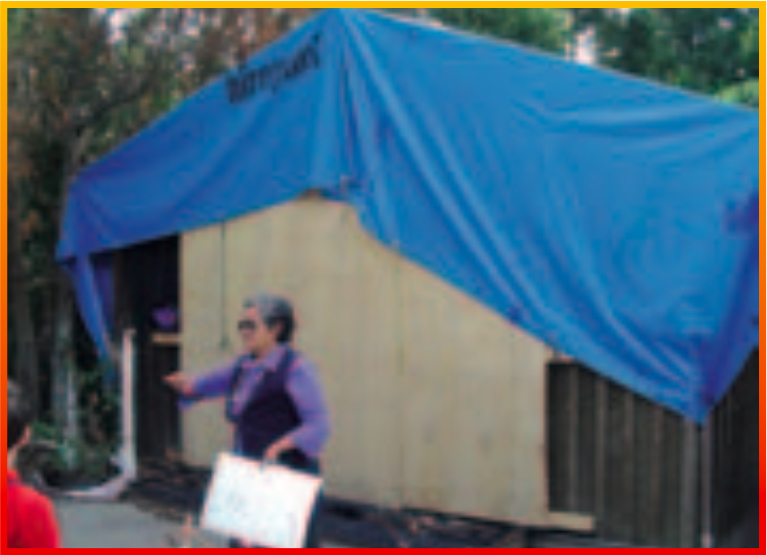
Eventually smiles emerged as Whaea Taini accepted the taniwha and proud children moved forward to hongi or kiss Whaea Taini remembering so clearly that this is what one does on a marae. Children were encouraged to lean forward and touch the “broken house” (children’s words) and view for themselves the remains of a special place they had visited five months earlier, a place full of wonderful stories and memories.
Whaea Taini assured the children that the taniwha would play a significant part in the rebuilding project and she felt that the bush walkway once repaired would be the best resting place for such a fine creature. She felt he would be admired by many!! We could tell that she was very touched by receiving such a beautiful gift.
To be able to share these precious moments with Steve and the school children made this healing journey so special. They played such a vital role in the creation of the taniwha and to have them be part of the presentation gave it real meaning for our children. It would have been out of the question not to involve them.
I am left wondering now about how Daniel feels, and whether he will continue his drawings. There will no doubt be “conversations” around our visit, and I look forward to children expressing their feelings and engaging in robust reflection on the reciprocal relationship we have with Whaea Taini. We look forward to her visit in the near future to bless our native garden.
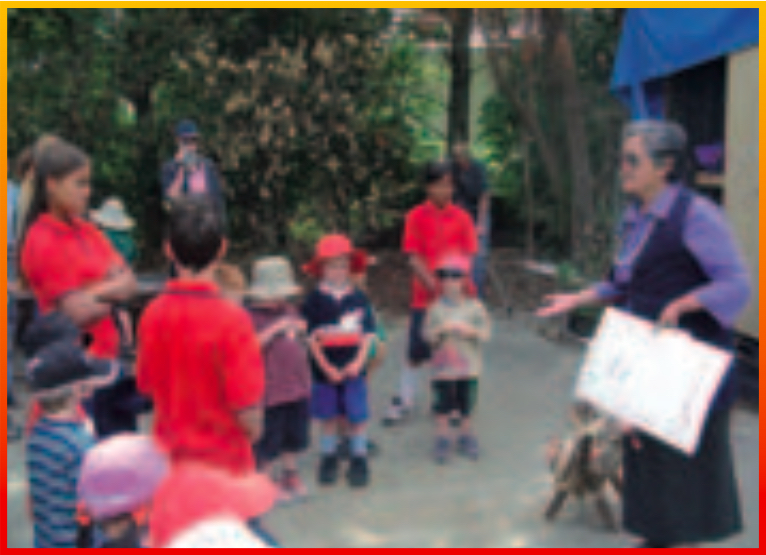
What has surprised our teaching team?
Our children have taken on board Daniel’s pain and shown such interest in the many drawings he has done at home and at kindergarten about the fire. They have engaged in deep and meaningful conversations about the fire and perused the many newspaper cuttings with much interest. Their voice needed to be heard and they expressed it in many forms, some creatively using mixed media, through drama and music, but most of all they wanted to question and ponder over the precious carvings and artefacts that had been destroyed and what they could do to make Whaea Taini happy again.
Did their thinking change our view?
We began to reflect more on our practice and revisit our thinking on the role we needed to play with supporting these children in their understanding of something so devastating as losing something precious in a horrible senseless arson attack. Were we prepared to answer questions honestly, would we gloss over certain aspects or was this demeaning to children’s intelligence? It was decided unanimously that our image of the children stood strong and we valued their thinking and reasoning and yes, we would embark on a journey with them to make sense of this disaster and hopefully heal some of the hurt and lingering uncertainty.
How did the visit impact on us all?
It opened up a new world, a world of reciprocal relationships, a reaching out and embracing of two cultures, a sharing and understanding which needed no words. The reverence and pride the children showed during the ceremony gave us such strength and made us aware that when children say “I just know” that we need to take notice and respect that, yes, they intuitively do know some things. Through such open and meaningful conversations with all parties there was a consensus that we did the right thing. Our visual documentation tells a wonderful story of togetherness, pride, and humility.
-
-
Self in the mirror
-
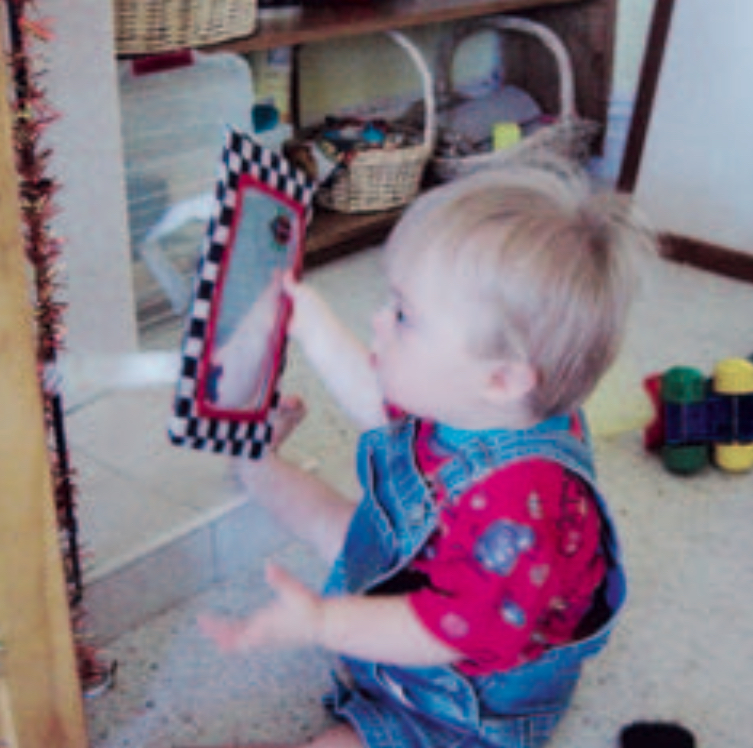
Matthew is becoming aware of his physical presence. He found a mirror and seemed intrigued by what he could see in it – himself! He spent many moments looking intently at the reflection before jiggling up and down and from side to side, his eyes gazing at the image and looking at it from all the different angles. He revisited the mirror throughout the afternoon, showing great interest in his new discovery.
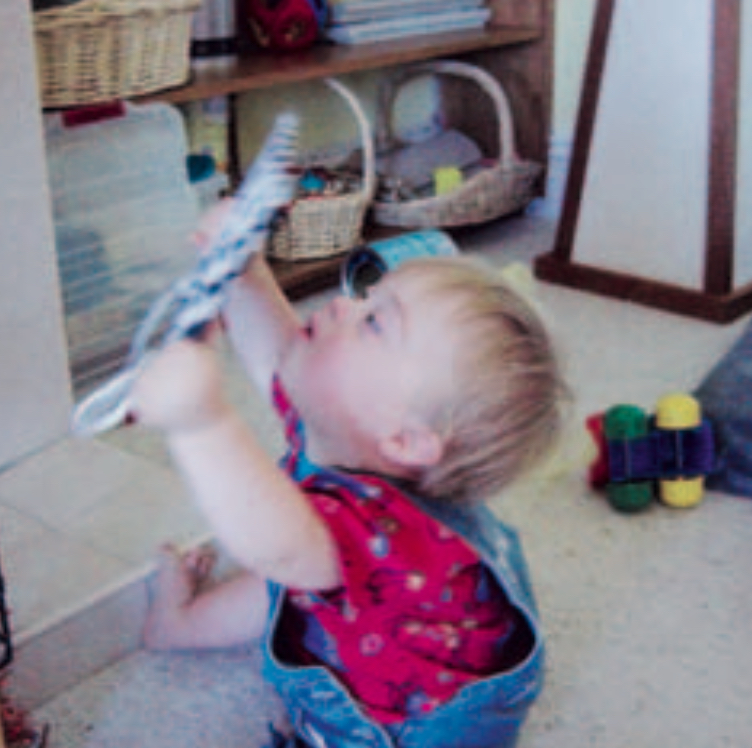
Shelly
15 January
-

